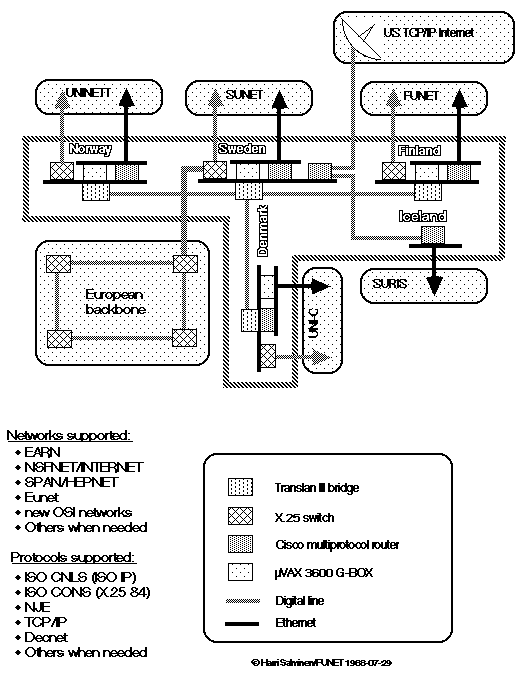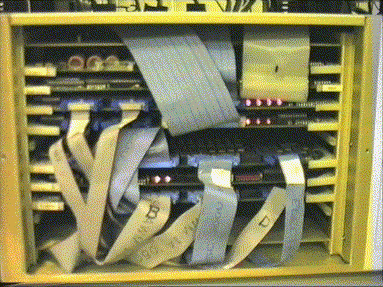 |

-
FUNET acquires Cisco Systems multiprotocol routers (with DECNET
and IP network protocols routed by the same equipment) instead
of bridges.
-
The joint Nordic NORDUnet program approves the X.EARN project's plan for a joint Nordic
academic multiprotocol network
and decides to apply jointly for an
Internet link to the NSFNET at a time when elsewhere in
Europe public administrations and universities were being
strongly pressured into going over to the OSI protocol and X.25
networks. The X.EARN plan also took other needs into account,
even though it was optimised for Internet use. By the end of
1988, the NORDUnet network was in operation, and permission had
been given to link it to the NSFNET, which was directly
connected to the ARPANET.
-
On November 2, Robert Morris' Internet Worm program spreads
through the Internet, automatically copying itself. The
NORDUnet's Internet connection
was ready at routing level on 1.12.1988, so the
Nordic countries were spared from this problem. But, as a
consequence, people began to pay more attention to Internet
security.
-
The basic NSFNET network is updated to use T1
(1.5Mbit/s) lines. Jarkko Oikarinen uses the RELAY
software which runs on IBM mainframes in the EARN network
as a model to develop the
Internet Relay Chat (IRC) real-time discussion system. Because
he makes it for the Unix operating system popular on the
Internet, it soon spreads widely.
|

